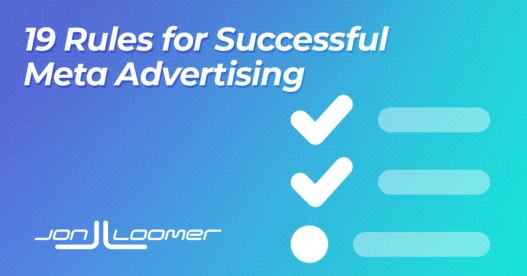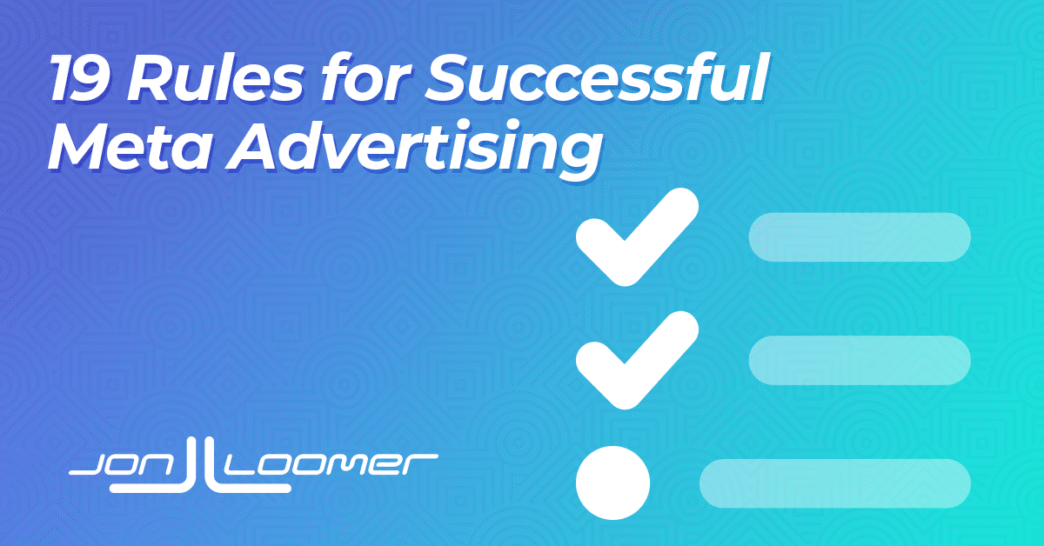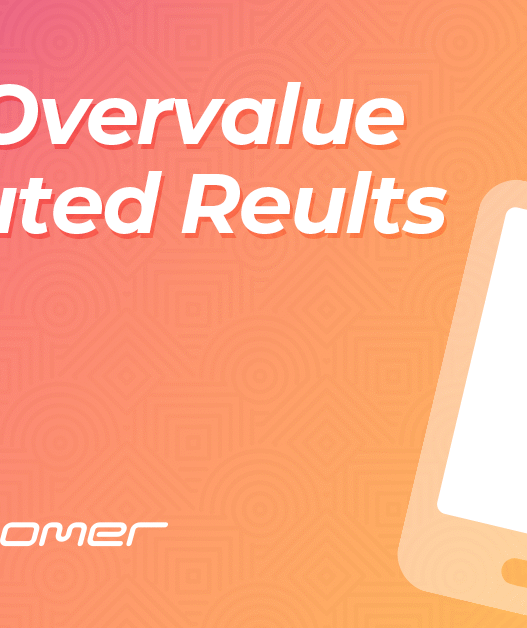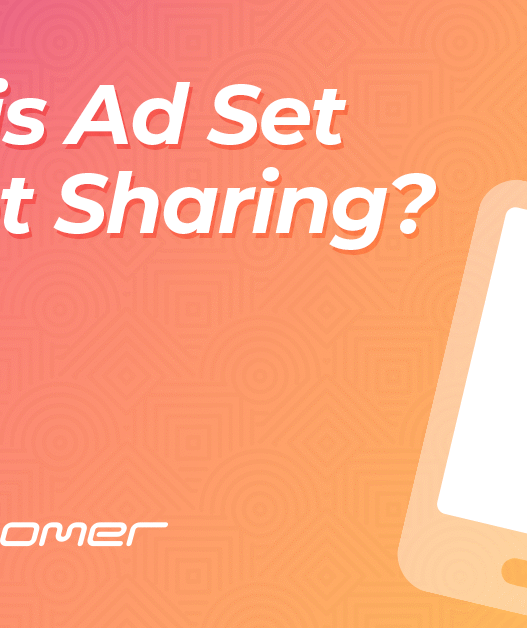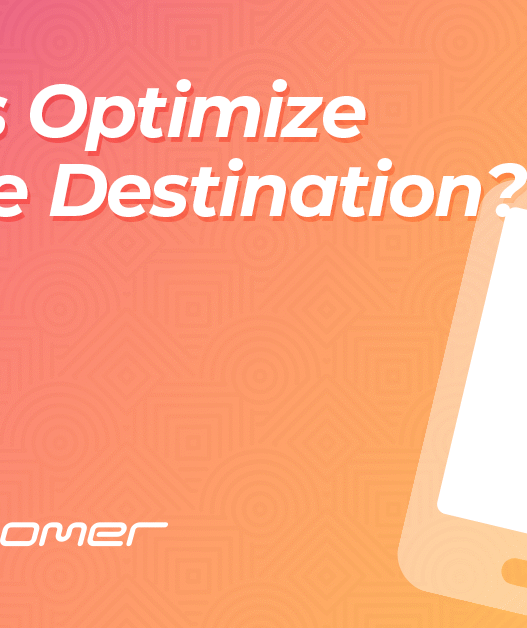How should you approach Meta advertising to get consistent, predictable results? How do things work now? I’ve assembled 19 rules to highlight where and how you should focus your energy now.
If you consume much of my content (blog posts, videos, and podcast episodes) or participate in my weekly webinars or strategy sessions for members, you’ll recognize themes throughout. These are phrases that I repeat to help advertisers understand what is important.
This post is a consolidation of the 19 most important rules to both understand how Meta advertising works and get better results.
Here are the rules (click the link to jump to each section):
- Keep it Simple
- No Guaranteed Strategy Exists
- The Algorithm is Literal
- The Illusion of Targeting Control
- Break From Defaults to Solve Problems
- Remarketing Happens Naturally Now
- Your Ads Do the Targeting
- Give Meta Copy and Creative Options
- One Ad is Composed of Many Winning Combinations
- Don’t Get Emotionally Attached to Your Ads
- Don’t Micromanage Your Results
- Attribution is Your Responsibility
- Don’t Blame the System for Your Bad Results
- Let (Meaningful) Results Be Your Guide
- Focus on Metrics That Matter
- Is It Correlation or Causation?
- Embrace “It Depends”
- Update Your Assumptions
- Be Ethical to a Fault
1. Keep it Simple
It sounds counterintuitive. A more complicated approach sounds more sophisticated and “better.” But, because of how things work now, simple is almost always better.
Prioritize fewer campaigns to focus on your primary goals. Limit unnecessary ad sets for audience segmentation. Avoid complexity unless it’s required.
A simplified approach has many benefits. It consolidates your budget to give what’s running the best chance of performing. It helps you exit the learning phase and achieve stable results. And, maybe most importantly, it helps assure that the results you see are meaningful.
Complex campaign construction that spreads out your budget among countless assets leads to small sample size results. Even if you have a larger overall budget, it can lead to an inability to get a read on how well anything is working.
It doesn’t mean that you should only create a single campaign and ad set, though that may be the best approach for many advertisers. But it does mean to prioritize simplicity and only add complexity when it’s necessary.
Learn More:
2. No Guaranteed Strategy Exists
One reason that a simplified approach isn’t particularly popular is that it’s not easily brand-able. I’m not going to create a course about the simplified approach to campaign creation because it would be a single lesson long.
Meanwhile, any social media personality hoping to attract ad business is screaming about their complex, guaranteed approach to advertising. It sounds better. And it sells.
Not only would I argue that complex strategies are generally counterproductive, but there is no such thing as a guaranteed strategy for results. What works for me may not work for you, and vice versa.
There are limitless variables at play that impact results: Industry, brand reputation, budget, product price point, website performance, ad copy and creative, and so much more. You can copy someone else’s “effective” strategy and get completely different results, even if it’s a competitor.
It’s important to understand that whether or not your advertising is effective has very little to do with campaign construction and the levers you pull. Yes, you should simplify it to eliminate the noise and set yourself up for the best possible chance of results. But beyond that, no lever or setting will force people to buy from you.
Your results, once the complexity is stripped away, rely heavily on the effectiveness on your ads themselves.
Learn More:
3. The Algorithm is Literal
Realizing this may be the single most important point to understanding your role in the process of advertising.
Your campaign objective means very little. It’s your performance goal that defines how your ads will be delivered.

The performance goal defines whether you want link clicks, landing page views, or conversions. And if you choose to maximize conversions, you also decide whether you want purchases, leads, or something else.
Once this choice is made, the algorithm’s entire focus is getting you that action. Your ads are shown to people the algorithm thinks are likely to perform that action. Success and failure is based on getting that desired action.
The fact that the algorithm is literal can be both good and bad. It’s good when optimizing for purchases. You and the algorithm are on the same page regarding what you want. But it can lead to problems, too.
If you optimize for link clicks, you assume that the people clicking your ads care about your product. You think that once they click, they may even buy from you. But the algorithm does not care. It only cares about getting that click because you defined it as the action that you want.
These clicks can be accidental. They can come from people who simply click everything. They can come from bots before they’re detected. But the algorithm doesn’t care. You do.
Because the algorithm is literal, you may also run into lead quality issues. You’ve defined your goal action as a lead, so the algorithm’s only focus is on getting you leads. It does not care about whether these leads do anything else. The only thing that matters is that they completed your form.
But you care, of course. And because you care, it’s critical that you understand this simple point: The algorithm is literal.
Many of the problems that happen can be explained by this. It’s why optimizing for top-of-funnel actions is almost always a waste of money. It’s why Meta may spend more of your budget on people in an older demographic to get you cheap leads.
But it’s also why optimizing for a purchase should be your priority.
Learn More:
4. The Illusion of Targeting Control
There was a time when I taught that targeting was the advertiser’s most important role. We needed to properly define the right audience to see our ads. The best ads, after all, wouldn’t work in front of the wrong people.
While it remains important that the right people see our ads, this has very little to do with targeting now. Or, most importantly, our control over targeting is mostly gone.
We retain certain customizations that provide the illusion of control:
- Age minimum and maximum
- Gender
- Lookalike audiences
- Detailed targeting (interests and behaviors)
But if you optimize for conversions (and you should be since the algorithm is literal), most of your inputs are audience suggestions.

You can provide strict audience controls for an age minimum (of no more than 25), location (people living in or recently in that location), and excluded custom audiences. But almost anything else is a suggestion by default. In some cases, it can’t be restricted.
It’s questionable whether audience suggestions do much of anything at all. Based on my tests, there’s no clear evidence that they make an impact on who sees our ads.
The result: The algorithm is going to reach whom the algorithm wants to reach.
This might sound bad, but it’s actually freeing. There’s little reason to create multiple ad sets to test targeting segments. You don’t need to waste time trying to isolate the best-performing lookalike audiences or detailed targeting.
While there are times when you can control targeting, they are also when the effectiveness of advertising is most questionable. Yes, you should add audience constraints when optimizing for link clicks, landing page views, and other top-of-funnel actions because you’ll otherwise get horribly low-quality results. But even your controls can’t completely fix the weaknesses in that optimization.
Let go of the need to control your targeting. It’s an illusion now anyway.
Learn More:
5. Break From Defaults to Solve Problems
Up to this point, you know that I recommend a simplified approach to Meta advertising. Simple campaign construction, fewer ad sets, and fewer customizations from Meta’s defaults.
That means prioritizing the default attribution setting when optimizing for conversions. The default bid strategy. And the default placements.
Of course, I can feel your face pressing against the screen as you insist I understand the exceptions. And you’re right! There are exceptions.
There are times when you should customize the attribution setting and remove 1-day view, or focus on 1-day click, or use Incremental Attribution.
There are times when you should consider setting a cost per result goal, or bid cap or ROAS goal.
There are times when you should restrict your audience by age or gender.
And there are times when you should remove Audience Network or other placements.
But the key point to emphasize here is that these are exceptions. You should normally stick with the defaults, especially if you don’t have expert knowledge supporting the decision to move away from them.
The main thing to understand is that the defaults are usually good enough. They lead to better results on average. Customizations away from Meta’s defaults should be considered when you need to solve a problem. And that needs to be a proven problem based on how things work, not a gut feeling.
You shouldn’t restrict your audience by age and gender to match your ideal customer. If you optimize for purchases, Meta should distribute your budget optimally to get the most results.
You shouldn’t need to remove the Audience Network placement when optimizing for conversions. If a placement doesn’t lead to the action you want, the algorithm adjusts.
Approach customizations with knowledge of how things work, the strengths and weaknesses of the algorithm, and proven results to support the move.
Learn More:
You wouldn’t recognize my approach from just a few years ago. There was a time when remarketing likely made up about 90% of my budget.
And it made sense. If you can segment the people who bought from you, subscribed to your email list, visited your website, and engaged with your Facebook or Instagram content, why wouldn’t you? These are the people most likely to know who you are and perform the action you want.
But a few things have happened during recent years that have changed my opinion on remarketing. And it was all started by algorithmic targeting.
Once again, it’s critical that you understand how things work to form a foundation. Meta’s Advantage+ Audience (which is the default targeting now) prioritizes your pixel activity, conversion history, and prior engagement with your ads before extending more broadly.
In other words, you don’t need to tell Meta to target your website visitors. It’s already happening because Meta knows that these are people who are likely to convert.
You can prove this with audience segments when using the Sales objective. Assuming you’ve defined your engaged audience and existing customers in Advertising Settings, you can breakdown results to see how much of your budget was spent on remarketing — even if you didn’t specifically target remarketing audiences.

I often see that 20-30 percent (and even more) of my budget is spent on remarketing. And this is without including prior engagement with Facebook and Instagram content (which can’t be used for defining audience segments).
So the first reason you don’t need to lean so heavily on remarketing is that it happens naturally now when targeting broadly. It’s less efficient segmenting that group when you can include them in a broader and less expensive audience.
But remarketing has other problems.
It’s not scalable. Most advertisers have limited remarketing audiences to work with, and they’ll be exhausted quickly. While you could target broadly (including remarketing) and increase your budget into the hundreds and thousands of dollars to take advantage of performance, that’s rarely an option with remarketing alone. Minimal budgets and minimal life cycles.
It’s also not incremental. Most advertisers who insist on remarketing point to their amazing results. But what they miss is that remarketing results are almost always misleading. They’re padded with view-through conversions from people who may not have even seen the ad. And even when someone converts after clicking, it’s not clear how much your ad contributed since they may have converted from another source eventually.
I’m not saying that these audiences are worthless and I also leave the door open for remarketing in certain situations. But know that this happens naturally and be aware of the potential problems associated with remarketing.
Learn More:
7. Your Ads Do the Targeting
Up until this point, I’ve basically told you to keep your hands off and, barring a few exceptions, keep it simple and let the algorithm do its thing. You rarely need to touch your targeting now. But, of course, that doesn’t mean you’ll automatically get good results.
You’ve defined the action you want with the performance goal, and Meta’s ad delivery algorithm will be focused on trying to get you those actions. But ultimately, you retain a whole lot of control here over performance: It’s the ads.
Your ad copy and creative need to appeal to your ideal audience. They need to lean into their pain points. Your ad should attract the action you want because clicking it helps solve their specific problem.
If you’re not getting the results you want, start with your ads. If you’re attracting low-quality leads or clicks from people who may not be your ideal customers, start with your ads.
Make sure that it’s very clear who your product is for. Just as importantly, be clear about who it’s not for. You want to attract your ideal audience and repel the bad fit.
While many have theorized that Meta scans ad copy to determine who sees your ads, it may be far simpler than that. At the very least, Meta’s ad delivery algorithm considers how people respond to your ad. Adjustments are made based on who does and doesn’t perform your goal action.
And that’s why your ad copy and creative do the targeting now. By attracting the goal actions from your ideal customer, you’ll be sure that your ad is shown to more people like them. If your ad repels a certain type of person who doesn’t perform the action that you want, the algorithm will adjust.
Apply this knowledge to your lead forms. If you’re getting low-quality leads, be sure to ask questions that prevent such people from successfully completing your form. Your ad copy and creative help control targeting.
Learn More:
8. Give Meta Copy and Creative Options
Ad construction looks a lot different these days. Not long ago, it meant providing a single image or video, primary text, headline, and description. While there were a few exceptions when things got more complicated (carousels and dynamic creative), most advertisers stuck with the standard method.
Things look different now. When we create an ad, we can provide up to five primary text, five headlines, and a description. We can also accept an additional five AI-generated primary text and headline options.
But the variations don’t stop there…
As I write this, there are 26 placements. An optimized ad looks different by placement, so we should consider customizing when necessary.
Dynamic creative and now flexible format are also options, which would mean providing up to 10 images and/or videos (and sometimes as many as 30 for flexible format) for a single ad.
Even if you don’t use those methods, there are ways to submit more than one creative. Advertisers can accept AI-generated images and background variations that can be displayed in addition to your primary creative. You can also accept related media from other ads to give Meta additional creative options.
We don’t know which text and creative will be shown to which person and in which placement. We don’t even know what will perform the best. Our main role now is to give Meta options.
That doesn’t mean that we create variations for the sake of creating variations. You don’t want to water down what we provide with low-quality copy and creative, or you’ll get low-quality results. You should be intentional about this.
But we should look at copy and creative more holistically than before. Make sure that Meta has options that will work for the right person in the right placement. That could mean generating these options within a single ad or it could be doing it with multiple ads.
Bad performance today is usually related to your copy and creative. The better job you do of giving the algorithm suitable options, the better chance you have of getting good results.
Learn More:
9. One Ad is Composed of Many Winning Combinations
Related to the item above, but this is an important point when understanding our role related to ad copy and creative.
There was a time when advertisers focused on isolating the winning copy and creative combinations. In fact, this is still a popular approach (though I’d argue it’s unnecessary).
But once you understand there are hundreds, and even thousands, of potential combinations of copy and creative for a single ad, you should hopefully begin to see that this approach is outdated.
Creating an effective ad now is about making sure that Meta has the assets to generate the most combinations to reach the right people in the right placement to get your desired action. One ad should consist of far more than a single winning combination of copy and creative; it should have many.
Once you see it this way, you’ll spend less time obsessing about small sample sized copy and creative combinations. You’ll be more concerned about whether the ad, composed of its various parts, performed in aggregate.
Learn More:
10. Don’t Get Emotionally Attached to Your Ads
I totally get it. You spent time creating that ad. You brainstormed the pain points of your ideal customer and crafted copy that would appeal specifically to them. A designer carefully created images that work for all 26 placements. And your results stink.
What do you do? This is a great ad! It must be something wrong with Meta. Maybe costs are up right now or delivery is buggy.
The better explanation: The ad just isn’t that good.
One of the biggest mistakes we can make as advertisers is getting emotionally attached to our ads. There’s no reason to waste money on something because you believe that it should work. You can’t force it to work.
This also goes for ads that worked weeks or months ago but no longer do. They ran the course. They no longer resonate.
Be ready and willing to pull the plug on an ad and move on. If something isn’t working, learn from it and create another ad.
That could be different copy and creative entirely, focusing on a different pain point and solution. Or it could mean developing a more appealing offer.
Learn More:
11. Don’t Micromanage Your Results
Advertisers who micromanage their results have their heart in the right place. They think they are “optimizing” their campaigns. But they’re often doing more harm than good.
We’ve seen this with targeting. You rarely need to micromanage your audiences. There simply isn’t the benefit that there once was with creating multiple ad sets by audience segment. In fact, it usually has the opposite effect. It results in auction overlap or audience fragmentation. It waters down results and drives up costs.
This happens with placements, but hopefully less often now. Advertisers run a breakdown by placement and isolate the top 10 performers. They then turn off all other placements. Don’t be surprised when results don’t improve.
We’ve seen it with dayparting. Advertisers notice that they get worse results after peak hours or during the weekends, so they turn ads off during those times. Better results almost never follow.
But we see this with ads, too. Advertisers often obsess over day-by-day ad performance. They see one ad is getting budget but not conversions, so they turn it off. Or they’re mad that one ad is getting most of the budget while not boasting the best CPA, so they turn it off to force the algorithm to show other ads.
None of this micromanagement is productive. When it backfires, advertisers often come up with conspiracy theories to explain it. But they’re missing the plot.
A placement that isn’t driving conversions may still hold value. Someone may see your ads in right column repeatedly before acting on that ad in the news feed. If those initial impressions didn’t happen, they may not have eventually converted.
The same goes for those off-peak impressions or the versions of your ads that are getting ad budget but not the attributed results that you want. Different people see different versions of your ads on different devices or in different placements. All contribute to the overall bottom line.
This is why we should focus primarily on results in aggregate. Instead of isolating the top primary text and creative combination, focus on the top performing ad. Instead of obsessing over distribution of your budget to each ad, focus on the performance of the ad set.
The algorithm is dynamically distributing your ads based on signals, doing all it can to show the right version to the right person. You will never do better by micromanaging the process.
Learn More:
12. Attribution is Your Responsibility
Attribution is how Meta gives credit to an ad for a conversion. You have a significant role in this process.
Event Setup and Deduplication.
Meta’s ability to properly attribute conversions starts with you. Your first job is to accurately and thoroughly define when conversions happen and send that information to Meta.
That means setting up the pixel and Conversions API. It means properly creating and testing the events. It means deduplicating events so that they aren’t inflated. And it means troubleshooting when you spot a problem.
Interpretation of Results.
Attribution is far more complicated today than it was a few years ago. You cannot take your conversion results at face value.
Unfortunately, poor interpretation of results is common, particularly among less-experience advertisers. They see amazing results and they don’t ask why. They see a limited number of conversions, and they don’t drill deeper. But there are so many questions that you should be asking.
How many of your conversions are click vs. view-through? How many happened within 1 day vs. 7 days? How many more happened within 28 days? How many were first conversions? How many were incremental?
You have ways to add important context to results now. And once you do, make sense of why the results vary and what it means.
Learn More:
13. Don’t Blame the System for Your Bad Results
When results aren’t going your way, it’s easy to blame the system. You’re doing everything right, so there must be something going on with Meta right now. Some bug, some bad enhancement, something that has nothing to do with you.
And if you ask other advertisers if they’re seeing something weird with their results, guess what? You will always get people willing to raise their hand and say that it’s happening to them, too.
And then the conspiracy theories start. And they’re easy to latch onto because there could be some truth to them and they’re believable.
Most importantly, they shift the blame from you to someone else. It’s not your fault. You did everything right.
But this is a pretty chaotic way to approach your advertising. Shifting blame from yourself to Meta doesn’t do anything to fix the problem. While bugs happen, the problem can almost always be traced to something within your control.
Take responsibility for your results. Know that a high-performing ad isn’t forever. Always be prepared to adjust based on performance changes caused by seasonality, saturation, fatigue, or something else.
When it happens, we don’t just sit there, helpless. We adjust. We think about what we could do differently and try again.
Learn More:
14. Let (Meaningful) Results Be Your Guide
Advertisers, particularly when they lack confidence, find themselves in an endless search for a templated approach. They want a universal way to run their ads.
This isn’t just about strategy and campaign construction. It’s also about analysis and adjustment.
They want to know how often to refresh ad creative. Or whether 30 conversions in a week without exiting learning is enough. Or whether they should restrict by age and gender when optimizing for leads.
There isn’t a universal answer in these cases. While the answer may not be what they want, it’s also quite simple: Let results be your guide.
There’s no reason to refresh creative on a regular cadence just because you’ve reached a certain number of days since the last refresh. You let results be your guide. If performance is dropping or creative fatigue has set in, you create new ads.
While the 50 weekly conversion threshold is a rule of thumb to exit the learning phase and get optimal results, it doesn’t mean that you need to follow it at all costs. You don’t optimize for something else if you can’t get to 50. Are you consolidating your budget to maximize the number of conversions? Are your results profitable?
You don’t restrict by age and gender while running ads for lead generation simply because you think you should. Or maybe you heard about how Meta can waste a high percentage of your budget on people 65+ for cheap leads. You do these things because your results say that you should. Meta is actually wasting your money on demographics that result in low-quality leads.
Don’t let someone else’s rule of thumb control your approach. Let results be your guide, and make sure that these are meaningful results based on key metrics and adequate sample sizes.
Learn More:
15. Focus on Metrics that Matter
If you’re not careful, you can get distracted by lots of metrics that aren’t all that meaningful. Meta has dozens that you can look at, and only some of them are critical.
Advertisers are notorious for caring too much about secondary metrics like Click-Through Rate, Cost Per Click, and CPM. While they contribute to the story, they aren’t KPIs.
A low CTR doesn’t necessarily mean a bad ad (context for “low” is important, too). You can use click-bait to drive a high number of clicks that don’t result in conversions. You can also get a lower CTR, but from highly relevant people who are likely to convert.
A high Cost Per Click doesn’t mean a bad ad. You can guarantee a low Cost Per Click by optimizing for clicks and getting low quality. You may need to spend more for the highest quality traffic.
And don’t obsess over lowering your CPM. While fluctuations in CPM can certainly impact your overall costs, this also isn’t always controllable. You can easily lower your CPM with tricks like changing your performance goal or targeting cheap countries. But that rarely leads to better results.
Your primary metrics should be what you care about most. That would usually be the number of conversions, cost per conversion, and even Return On Ad Spend. Though all of those numbers will require context and a full understanding of your attribution reporting.
Analysis can also go beyond the initial goal action. If you’re running ads for lead generation, how many of those leads became a paying customer? What’s the value of those leads?
Learn More:
16. Is it Correlation or Causation?
You created two ad sets, one that includes a lookalike audience suggestion and one that doesn’t have any targeting inputs. The ad set with a lookalike audience has a 10% better CPA.
Did the inclusion of the lookalike audience cause the difference, or is it merely correlation?
Advertisers are guilty of making far too much of fluctuations in performance. You can’t always connect those fluctuations to a change in a variable. Sometimes, the cause is unknown or due to complete randomness.
My eyes were opened to this when I ran a simple A/B test of three identical ad sets. Meta didn’t know, of course, that all three were identical. But Meta chose a winner quickly when one of those ad sets outperformed the bottom ad set by 25%.
That difference in performance had nothing to do with anything that I did. But you could say that the ad sets all had different names. So did the name difference result in the range in performance?
Of course not. But while that correlation is obvious in this example, it’s not so obvious in others.
To avoid this pitfall, make sure that you keep things simple so that you’re able to isolate differences in performance to a single variable. But you’ll also need to be sure that you’re getting enough results that make that difference meaningful, beyond anything that can be explained by randomness or other factors.
Learn More:
17. Embrace “It Depends”
Advertisers want answers. They want consistency and predictability. This is especially found when adopting advertising strategies or setting expectations.
Unfortunately, there’s very little certainty when it comes to Meta advertising. What works for me may not work for you. The results you should expect depends on a long list of factors.
Because of this, advertisers should expect nuance. They should embrace “it depends.”
Performance and approach will depend upon things like industry, budget, seasonality, competition, brand reputation, website performance, product, price point, ad copy and creative, and a whole lot more. There are limitless factors contributing to results.
It’s fine to seek inspiration from others. But know that ultimately every situation is unique.
Learn More:
18. Update Your Assumptions
“That doesn’t work.”
A common trap that advertisers fall into is viewing today’s advertising through an outdated lens. If you don’t evolve with the changes, you’ll become obsolete.
If I never updated my assumptions, I’d still be pushing complex campaign construction. I’d focus almost entirely on remarketing. I would resist Meta’s push into algorithmic targeting and automated ad distribution.
And the truth is that I did resist these and many other changes. It feels like an attack on us personally when we see our “tried and true” approach slowly get phased out. But fighting it doesn’t help.
That doesn’t mean that you need to blindly accept every new feature and swear its effectiveness beyond any evidence. But it means you should be willing to test, retest, and retest again to remain current.
You may have tested something last year. But what was true then may not be true today. It may not be true a month from now.
To get the most out of this platform, we need to accept the constant changes, as difficult as that may be. We need to know how that impacts what we’re doing now.
With new information, we might just need to change what we’ve previously believed and how we’ve otherwise approached things. And that’s required to remain relevant when this industry doesn’t wait around for us to adapt.
Learn More:
19. Be Ethical to a Fault
This rule is evergreen and will always be true.
I am going to assume that advertising contributes to your livelihood. Either it’s central to your occupation or you rely on it to drive your business. If that’s the case, you have to take this seriously.
Advertisers who venture into gray areas of Meta ads policies are playing a very dangerous game. It’s incredibly short-sighted.
Do not be distracted when you see other advertisers “succeeding” with ethically questionable tactics. They may benefit for a while. They may even benefit for years. But they’re always one click away from getting shut down for good.
Maybe just an ad. Or their page. Or a pause on their ad account. Or their entire business portfolio. They may lose everything and never get it back.
Look, I get that sometimes well-meaning and even innocent advertisers get caught in Meta’s policy violation filters. While I can’t guarantee you’ll avoid it by playing it safe, it’s certainly the best approach.
Know Meta’s ad policies inside and out. Know what is acceptable and what is against the rules. Do everything you can to not only follow those policies, but avoid anything that’s even allowed and in a gray area when you can.
Being ethical to a fault doesn’t only protect your own business, but it protects your clients.
Learn More:
Your Turn
Is there anything else you’d add to this list of rules for successful Meta ads?
Let me know in the comments below!
